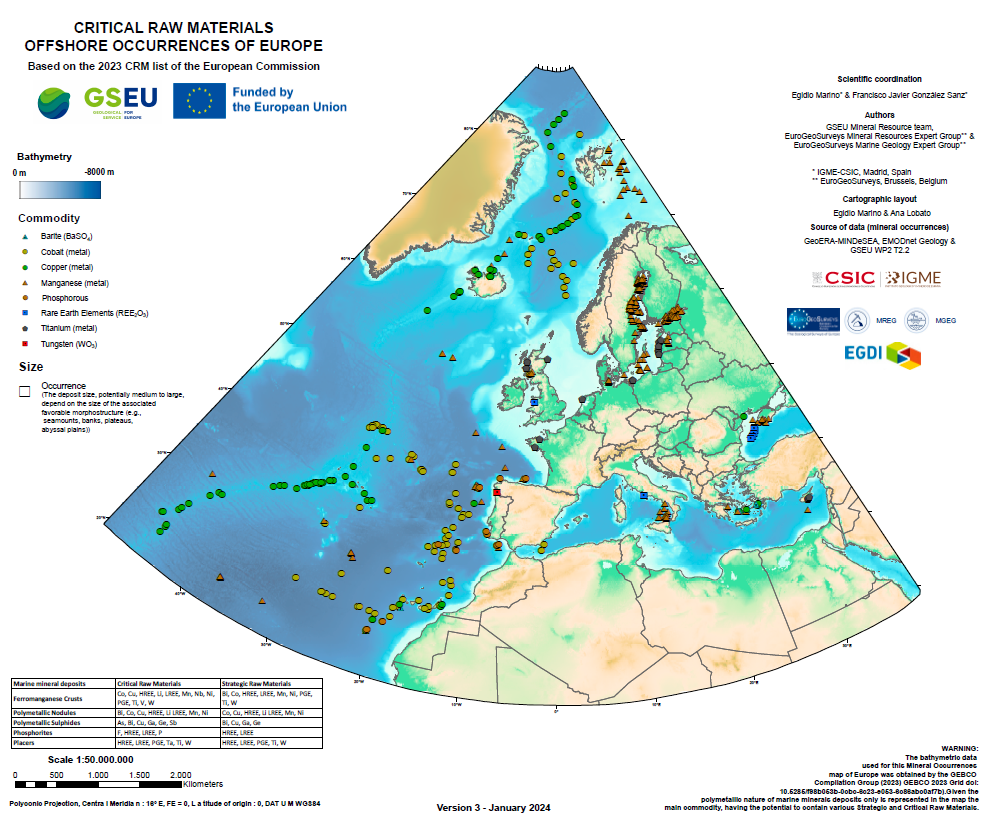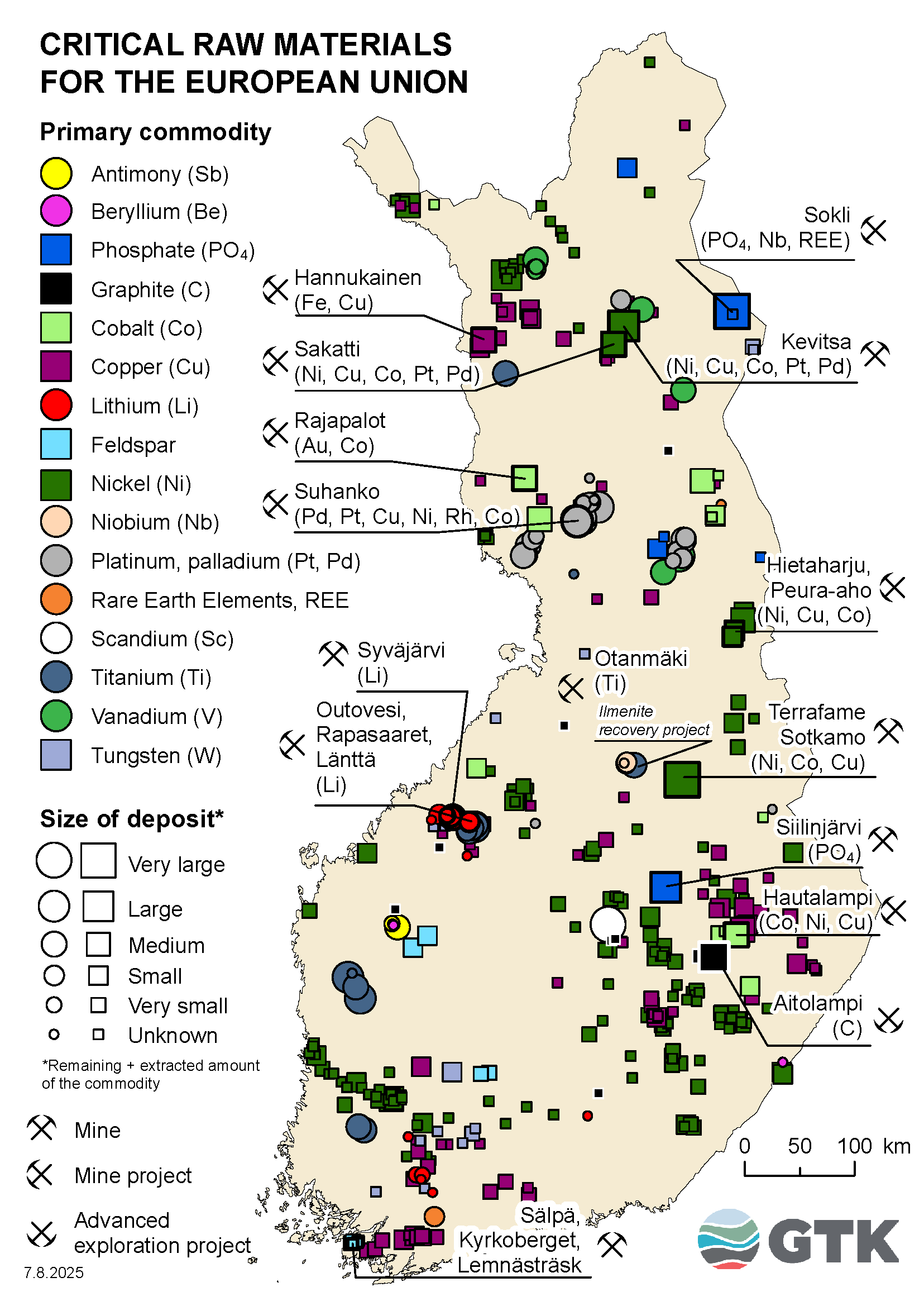Critical and strategic raw materials
Various entities have identified critical and strategic raw materials for their operations. Also the European Union has listed the critical raw materials that have great economic importance for Europe but which have a high risk of supply disruption.
In addition, the EU has identified some of the critical raw materials as strategic raw materials which are needed for the green transition, digitalisation or defence technologies. There is a significant difference between the global supply and demand for the strategic raw materials. In addition, increasing their production is relatively challenging.
There are 34 critical raw materials and of which 17 are also listed as strategic.
According to the EU, the demand for the critical raw materials will increase significantly as societies become more digital, energy-efficient and climate-neutral. They are needed, for example, for batteries and electric motors.
Critical raw materials
- Antimony
- Arsenic
- Bauxite/aluminium
- Baryte
- Beryllium
- Bismuth
- Boron
- Cobalt
- Coking Coal
- Copper
- Feldspar
- Fluorspar
- Gallium
- Germanium
- Hafnium
- Helium
- Heavy Rare Earth Elements
- Light Rare Earth Elements
- Lithium
- Magnesium
- Manganese
- Natural Graphite
- Nickel – battery grade
- Niobium
- Phosphate rock
- Phosphorus
- Platinum Group Metals
- Scandium
- Silicon metal
- Strontium
- Tantalum
- Titanium metal
- Tungsten
- Vanadium
Strategic raw materials
- Bauxite/aluminium
- Bismuth
- Boron – metallurgy grade
- Cobalt
- Copper
- Gallium
- Germanium
- Lithium – battery grade
- Magnesium metal
- Manganese – battery grade
- Natural Graphite – battery grade
- Nickel – battery grade
- Platinum Group Metals
- Rare Earth Elements for permanent magnets (Nd, Pr, Tb, Dy, Gd, Sm, and Ce)
- Silicon metal
- Titanium metal
- Tungsten
Critical Raw Materials in Europe
In the Geological Service for Europe (GSEU) project, the European Geological Surveys have prepared maps of the currently known deposits and occurrences of Critical Raw Materials in Europe. One map shows the deposits and occurrences in land areas and the other map in marine areas. Only medium sized and larger deposits are shown on the maps. The maps can be downloaded as PDF files from the links below.
The map of onshore CRM deposits shows 67 different mineral deposits for Finland, with antimony, arsenic, beryllium, graphite, cobalt, copper, lithium, manganese, niobium, nickel, phosphate, platinum group metals, rare earth elements, scandium, titanium, and vanadium as Critical Raw Materials. Of these, cobalt, copper, nickel, phosphate, platinum metals and feldspar are currently produced in Finland.
Offshore, numerous manganese deposits are known from the Gulf of Finland and the Gulf of Bothnia, but currently, they are not being utilized. These deposits consist of iron-manganese precipitates and also contain significant concentrations of phosphates and rare earth metals.
- The map of onshore CRM deposits below, as well as the background material, can be downloaded from the GSEU project website at this link.
- The map of offshore CRM deposits below can be downloaded from the GSEU project website at this link.
Onshore CRM deposits

Offshore CRM deposits

Mines, mining projects and advanced exploration projects containing critical raw materials in Finland
The map shows those deposits in GTK’s mineral database whose primary commodity is one of the raw materials identified as critical to the European Union. The commodity in question is represented by a colour symbol, and the size of the symbol indicates the size of the deposit for the commodity in question according to the INSPIRE specification (see INSPIRE Infrastructure for Spatial Information, Annex F). Under the name of the deposit, the parentheses also include other EU-critical raw materials that are produced or planned to be produced from the deposit. In addition to the deposits marked on the map, there are other mineral deposits in Finland where raw materials critical to the EU are found as main or secondary, but not as the most important commodity. For such deposits, only sites that have progressed to mining projects are shown on the map. This is the case, for example, of Hannukainen, whose main commodity is iron and not copper, which is a critical raw material for the EU.
A mining project here refers to a project that the company actively promotes towards starting mining production and whose planning has advanced to the point where the contact authority has announced the project’s EIA programme. In the advanced exploration project, these conditions have not yet been met.
Critical raw materials produced from the Finnish mines are:
- Phosphate (Silinjärvi)
- Cobalt (Terrafame, Kevitsa)
- Copper (Kevitsa, Terrafame)
- Nickel (Terrafame, Kevitsa)
- Platinum and Palladium (Kevitsa)
- Feldspar (Sälpä, Kyrkoberget, Lemnästräsk)
Note: Lithium is not yet produced, although on the map Syväjärvi has already been marked as a working mine.

